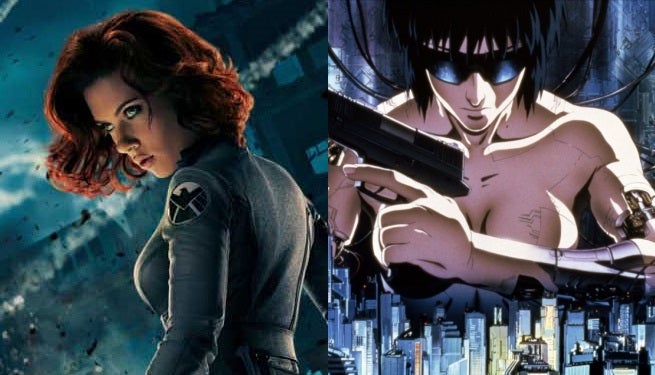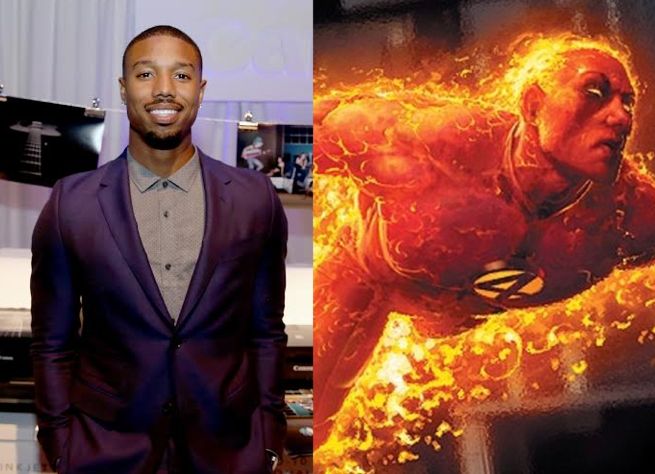Last week, Dreamworks signed Scarlett Johansson to star in their live action remake of the classic Japanese animated film Ghost in the Shell. The original film, and the manga it is based on, is set in a near future Japan. While Dreamworks hasn’t specifically named Johansson’s character, it is presumed that she will either be playing the previous film’s lead, Motoko Kusanagi, or a westernized version of the character.
Videos by ComicBook.com
Both of these possibilities are problematic, but the reasons why vary depending on Dreamworks’ approach. Let me begin by saying that these issues have nothing to do with Johansson’s abilities as an actress – I’ve enjoyed her work since when I only knew her as Rebecca from Ghost World, and she’s proved herself capable of action work with her roles in Captain America: The Winter Soldier and Lucy in 2014 alone – but it’s

Some of the issues are practical, and some are more about culture. Let’s tackle the practical first, largely because I can cite actress, blogger, producer, and geek celebrity Felicia Day to sum it up pretty accurately. The practical problem is that there are simply not enough major roles for minority actors to play, making it unfairly difficult for them to find good work. Here’s how Day sums it up, in response to the casting of Rooney Mara, a white actress, in the role of Tiger Lily, a Native American princess, in the movie Pan:
“I am not upset about Tiger Lily, a role originally written for a Native American female character in the book, being cast as white because it upsets the canon. Screw canon. I am upset about a role that was expressly written as a female minority being given to white actor instead. And here is why.
Most lead characters and lead actors of movies are white. Period. I even dug up a recent study to back that up, like this is some f***ing term paper or something: Across 100 top-grossing films of 2012, only 10.8% of speaking characters were Black, 4.2% were Hispanic, 5% were Asian, and 3.6% were from other (or mixed race) ethnicities. Just over three-quarters of all speaking characters are White (76.3%).”
Some will argue that, if an actor is good enough, they’ll be able to make their way to the top regardless of race. That’s has proven true in certain cases, but they can almost be counted on one hand. It’s pretty hard to show off your acting chops when you’re not given any speaking lines. As long as that’s true, it’s hard to argue that the deck isn’t
This is why, as Day points out, casting Tiger Lily as white is not the same thing as, say, casting the Human Torch as black. In the former case, you are taking an opportunity away from a minority actor. In the latter, you’re providing them a new one.
It’s a similar case with Ghost in the Shell. The movie should, by all rights, be a vehicle to stardom for Rinko Kikuchi, or another up and coming Japanese actress. Instead, it seems it was given to Johansson because her name is easier to sell to Disney and their audience.
Then there’s the question of how casting Johansson effects the narrative itself. It’s hard to believe Dreamworks would try to pass Johansson off as a character named “Motoko Kusanagi,” which makes it easy to imagine them moving the film’s plot to the United States. There’s something insincere about this move. Japan is a country and a culture with a dual nature (I realize I’m oversimplifying here, as Japanese culture is much more nuanced than can be explained easily in the context of this article, but bear with me). Japan has a cultural history steeped in Shinto animism and spirituality. As a modern state and economy, the country has long been at the forefront of technological innovation, including forays into robotics.
Ghost in the ShellAlternatively, they could make Johansson’s character of western descent, but living in Japan, keeping the thematic resonance of the locale, but adding the condescending implication that future Japan’s most kickass action heroine is actually an American.
Thanks to Motoko’s unique, artificial physiology, there’s also another, and perhaps even more complicated, option. Perhaps Kusanagi is of Japanese origin, but chose a western looking artificial body. It’s entirely plausible in the context off the narrative, but the idea of a Japanese woman choosing to change her physical ethnicity opens up a huge can of worms. There are interesting issues of race and identity in the modern world that, maybe, could be explored here, but it’s hard to believe that a big budget Hollywood action movie, particularly one that seems to have only managed to get the greenlight based on the star power of its lead, will be willing and capable of tackling such a heavy, heady, complex and complicated issue. Even if the film did go there, there’s still a good chance it would ultimately come off as a roundabout way to justify the white lead that necessitated the plot to begin with.
Ultimately, casting Johansson as the lead in Ghost in the Shell seems like a problematic financial shortcut. It may have been a necessary move to find financing for the film, but that justification presumes that such a live action adaptation just absolutely has to be made. In truth, twenty years later, the original Ghost in the Shell film holds up just fine, without the help of Dreamworks, Hollywood, Steven Spielberg, or Scarlett Johansson, making the necessity of a live action adaptation seem dubious at best.
The live action Ghost in the Shell film, starring Scarlett Johansson, is scheduled for theatrical release on April 14, 2017.











